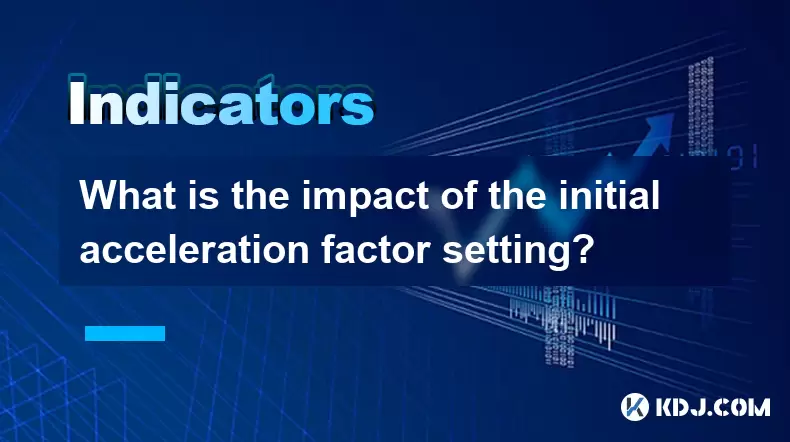-
 Bitcoin
Bitcoin $115100
-1.30% -
 Ethereum
Ethereum $4758
-1.70% -
 XRP
XRP $3.027
-2.19% -
 Tether USDt
Tether USDt $0.9998
-0.01% -
 BNB
BNB $883.2
-1.42% -
 Solana
Solana $204.0
2.62% -
 USDC
USDC $1.000
0.02% -
 Dogecoin
Dogecoin $0.2371
-0.97% -
 TRON
TRON $0.3612
-1.24% -
 Cardano
Cardano $0.9128
-2.19% -
 Chainlink
Chainlink $26.13
-3.93% -
 Hyperliquid
Hyperliquid $44.73
0.90% -
 Sui
Sui $3.715
-0.56% -
 Stellar
Stellar $0.4153
-2.41% -
 Ethena USDe
Ethena USDe $1.000
-0.04% -
 Bitcoin Cash
Bitcoin Cash $588.9
-2.06% -
 Avalanche
Avalanche $25.91
3.27% -
 Hedera
Hedera $0.2525
-1.45% -
 Litecoin
Litecoin $120.9
-1.35% -
 UNUS SED LEO
UNUS SED LEO $9.607
0.30% -
 Toncoin
Toncoin $3.382
-0.31% -
 Shiba Inu
Shiba Inu $0.00001329
-0.38% -
 Uniswap
Uniswap $11.38
-1.67% -
 Polkadot
Polkadot $4.222
2.83% -
 Aave
Aave $354.5
4.93% -
 Dai
Dai $0.0000
0.00% -
 Bitget Token
Bitget Token $4.704
-1.49% -
 Cronos
Cronos $0.1565
1.83% -
 Ethena
Ethena $0.7463
1.55% -
 Monero
Monero $265.8
-0.39%
What is the impact of the initial acceleration factor setting?
The initial acceleration factor in Parabolic SAR impacts trade signals in crypto markets—too high causes early exits, too low delays reversals; optimal settings depend on volatility, timeframe, and strategy.
Aug 13, 2025 at 11:35 am

Understanding the Initial Acceleration Factor in Cryptocurrency Trading Algorithms
The initial acceleration factor is a critical parameter used in certain technical analysis tools, most notably the Parabolic SAR (Stop and Reverse) indicator. This value plays a foundational role in how quickly the indicator responds to price movements, particularly in trending markets. Within the cryptocurrency trading environment, where volatility is high and price swings are frequent, the setting of this factor directly influences the sensitivity of trade signals. A properly configured initial acceleration factor can help traders identify entry and exit points more effectively, while an improperly set value may lead to premature reversals or delayed signal generation.
The initial acceleration factor typically starts at a default value of 0.02 in most trading platforms. This number is not arbitrary—it represents the rate at which the SAR's distance from the price increases as the trend continues. When this value is higher at the outset, the Parabolic SAR dots move faster toward the price, potentially triggering earlier reversal signals. Conversely, a lower initial value makes the SAR more conservative, requiring stronger momentum before a trend reversal is indicated.
Impact on Signal Generation in Volatile Cryptocurrency Markets
In fast-moving crypto markets, such as those for Bitcoin (BTC) or Ethereum (ETH), even small adjustments to the initial acceleration factor can significantly alter trading outcomes. Consider the following scenarios:
- When the initial acceleration factor is set to 0.05, the Parabolic SAR reacts more aggressively to price changes. This may generate early exit signals during minor pullbacks, which could be beneficial in choppy conditions but may also result in being "shaken out" of a strong trend.
- When the factor is reduced to 0.01, the SAR lags further behind price, reducing false signals during consolidation phases but potentially missing optimal exit points near trend peaks.
This sensitivity means traders must align the initial acceleration factor with their risk tolerance and trading strategy. Scalpers and day traders may prefer a higher initial value to capture short-term momentum, while swing traders might opt for a lower starting factor to avoid noise-induced exits.
Step-by-Step Configuration in Trading Platforms
Configuring the initial acceleration factor correctly requires precise steps, especially when using platforms like TradingView, MetaTrader, or Binance's advanced chart tools. Below is a detailed guide to adjusting this parameter:
- Open the chart for your chosen cryptocurrency pair (e.g., BTC/USDT).
- Click on the "Indicators" button and search for "Parabolic SAR".
- Once added, click on the settings (gear icon) next to the indicator name.
- Locate the field labeled "Acceleration Factor Step" or "Initial Value".
- Modify the initial acceleration factor to your desired level (e.g., 0.01, 0.03, or 0.05).
- Ensure the maximum acceleration factor is also set (commonly 0.2), as this caps how fast the SAR can accelerate.
- Apply the changes and observe how the SAR dots shift relative to recent price action.
It's essential to backtest these settings using historical data. For example, apply the modified Parabolic SAR to a 1-hour BTC chart from a previous bull run and compare entry/exit points with the default settings. This process reveals how the initial acceleration factor affects trade frequency and profitability.
Interaction with Other Parabolic SAR Parameters
The initial acceleration factor does not operate in isolation. It interacts dynamically with the acceleration step and maximum acceleration factor. Each time a new price extreme is reached in the direction of the trend, the acceleration factor increases by the step value. For instance:
- Starting with an initial acceleration factor of 0.02 and a step of 0.02, the factor becomes 0.04 after the first new high (in an uptrend).
- On the next high, it rises to 0.06, and so on, until it hits the maximum (e.g., 0.2).
This compounding effect means that even a small initial value can lead to rapid SAR movement over time. However, if the initial factor is too high, the SAR may reach its maximum too quickly, reducing its ability to adapt to prolonged trends. This behavior is particularly risky in crypto markets, where strong trends can last for days or weeks. Traders must balance the initial setting with the step and cap to maintain responsiveness without overreacting.
Practical Examples in Cryptocurrency Trading
To illustrate the real-world impact, consider two traders analyzing the Solana (SOL/USDT) 4-hour chart during a breakout phase.
- Trader A uses the default initial acceleration factor of 0.02. The SAR dots trail steadily below price, allowing the position to remain open through minor dips. The reversal signal only triggers after a significant candle closes below the SAR, capturing most of the upward move.
- Trader B uses an initial factor of 0.08. The SAR dots rise sharply toward the price. After a modest 5% pullback, the price touches the SAR, generating a premature sell signal. The trader exits early, missing the subsequent 30% rally.
This example highlights how the initial acceleration factor influences trade duration and profit capture. In highly volatile assets like Dogecoin (DOGE) or Shiba Inu (SHIB), where sharp corrections are common, an aggressive initial setting can lead to repeated whipsaws.
Frequently Asked Questions
Can the initial acceleration factor be set to zero?
No, setting the initial acceleration factor to zero disables the Parabolic SAR’s ability to track price. The indicator requires a positive starting value to initiate the acceleration process. A value of zero would result in static dots that do not adapt to market movement, rendering the tool ineffective.
Does the initial acceleration factor affect all timeframes equally?
No, the impact varies by timeframe. On shorter timeframes (e.g., 5-minute charts), a higher initial acceleration factor may be necessary due to rapid price changes. On longer timeframes (e.g., daily charts), a lower initial value prevents excessive sensitivity. Traders should optimize the setting based on the specific chart interval.
Is the initial acceleration factor the same across all cryptocurrencies?
Not necessarily. Cryptocurrencies differ in volatility and liquidity. Bitcoin may perform better with a conservative initial factor like 0.02, while a more volatile altcoin like Avalanche (AVAX) might require a slightly higher starting value (e.g., 0.03) to keep pace with price swings. Customization per asset is recommended.
How often should the initial acceleration factor be adjusted?
Adjustments should be made only after thorough backtesting and when market conditions change significantly. Frequent tweaking based on recent performance can lead to overfitting. A stable initial acceleration factor should be maintained unless there is a structural shift in the asset’s behavior.
Disclaimer:info@kdj.com
The information provided is not trading advice. kdj.com does not assume any responsibility for any investments made based on the information provided in this article. Cryptocurrencies are highly volatile and it is highly recommended that you invest with caution after thorough research!
If you believe that the content used on this website infringes your copyright, please contact us immediately (info@kdj.com) and we will delete it promptly.
- XYZVerse, Shiba Inu, and the 2025 Bull Cycle: A Meme Coin Evolution
- 2025-08-24 13:05:12
- WLFI Token, BingX, and the Trading Landscape: A New York Perspective
- 2025-08-24 12:45:20
- Aave, Governance, Allocation: Navigating DeFi's Shifting Sands
- 2025-08-24 12:45:20
- Crypto Coins in 2025: Meme Coins, Undervalued Blockchains, and Bull Run Predictions
- 2025-08-24 13:05:12
- Fed Pivot Ignites Crypto Rally: Altcoins Set to Outperform?
- 2025-08-24 13:25:12
- Eric Trump, Tokyo, and Metaplanet: A Bitcoin Bonanza?
- 2025-08-24 11:05:13
Related knowledge

What does it mean when the +DI and -DI cross frequently in the DMI indicator but the ADX is flattening?
Aug 11,2025 at 03:15am
Understanding the DMI Indicator ComponentsThe Directional Movement Index (DMI) is a technical analysis tool composed of three lines: the +DI (Positive...

What does the sudden appearance of a "dark cloud cover" candlestick pattern during an uptrend indicate?
Aug 13,2025 at 11:35am
Understanding the 'Dark Cloud Cover' Candlestick PatternThe dark cloud cover is a bearish reversal pattern in technical analysis that typically appear...

What does it mean when the moving average, MACD, and RSI all send buy signals simultaneously?
Aug 11,2025 at 01:42pm
Understanding the Convergence of Technical IndicatorsWhen the moving average, MACD, and RSI all generate buy signals at the same time, traders interpr...

What does it mean when both the KDJ indicator and the RSI show overbought signals simultaneously?
Aug 13,2025 at 11:35am
Understanding the KDJ Indicator in Cryptocurrency TradingThe KDJ indicator is a momentum oscillator derived from the Stochastic Oscillator, widely use...

What does it mean when the price is trading above the SAR indicator but the red dots are densely packed?
Aug 09,2025 at 11:49pm
Understanding the SAR Indicator and Its Visual SignalsThe SAR (Parabolic Stop and Reverse) indicator is a technical analysis tool used primarily to de...

What does it mean when the candlestick chart forms a "Morning Star" but trading volume is sluggish?
Aug 12,2025 at 06:28pm
Understanding the Morning Star Candlestick PatternThe Morning Star is a three-candle bullish reversal pattern commonly observed in cryptocurrency pric...

What does it mean when the +DI and -DI cross frequently in the DMI indicator but the ADX is flattening?
Aug 11,2025 at 03:15am
Understanding the DMI Indicator ComponentsThe Directional Movement Index (DMI) is a technical analysis tool composed of three lines: the +DI (Positive...

What does the sudden appearance of a "dark cloud cover" candlestick pattern during an uptrend indicate?
Aug 13,2025 at 11:35am
Understanding the 'Dark Cloud Cover' Candlestick PatternThe dark cloud cover is a bearish reversal pattern in technical analysis that typically appear...

What does it mean when the moving average, MACD, and RSI all send buy signals simultaneously?
Aug 11,2025 at 01:42pm
Understanding the Convergence of Technical IndicatorsWhen the moving average, MACD, and RSI all generate buy signals at the same time, traders interpr...

What does it mean when both the KDJ indicator and the RSI show overbought signals simultaneously?
Aug 13,2025 at 11:35am
Understanding the KDJ Indicator in Cryptocurrency TradingThe KDJ indicator is a momentum oscillator derived from the Stochastic Oscillator, widely use...

What does it mean when the price is trading above the SAR indicator but the red dots are densely packed?
Aug 09,2025 at 11:49pm
Understanding the SAR Indicator and Its Visual SignalsThe SAR (Parabolic Stop and Reverse) indicator is a technical analysis tool used primarily to de...

What does it mean when the candlestick chart forms a "Morning Star" but trading volume is sluggish?
Aug 12,2025 at 06:28pm
Understanding the Morning Star Candlestick PatternThe Morning Star is a three-candle bullish reversal pattern commonly observed in cryptocurrency pric...
See all articles

























































































